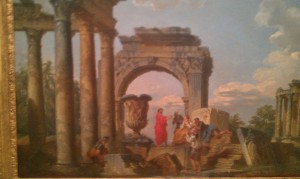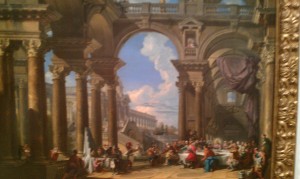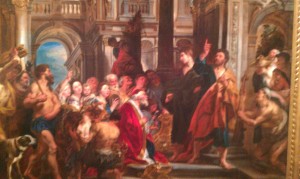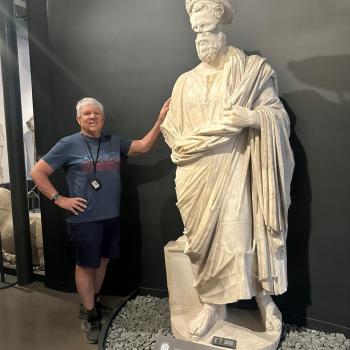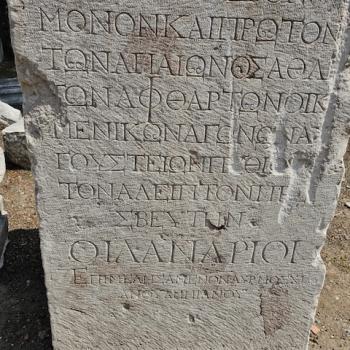This painting is entitled ‘the Sermon of the Apostle’ but clearly he hasn’t much of an audience in this case. The artist is Giovanni Panini and this was painted in about 1758. You can tell that while the official subject of the painting is St. Paul’s preaching, perhaps in Athens, that what the artist was really interested in painting was the landscape and ruins. This is in fact typical of a good deal of religious art done on commission by artists who would rather be painting something else!
This painting, believe it or not, is of the wedding feast of Cana, though I am sure Jesus would not recognize it. This painting is also by Panini and it gave me, as an historian, a bit of indigestion. Once again the artist is interested in painting a grand setting that never existed in ancient Cana, and notice that the setting is huge and foregrounded, whereas the persons are tiny, which ever dining table one focuses on. One could say the artist got the proportions, not to mention the details wrong, and that therefore the painting gave a blurry or out of focus picture of what happened… rather like this photo.
This colorful painting is entitled Paul and Barnabas at Lystra, and is by Jacob Jordaens the Elder, a Flemish painter, and was done in about 1640. If you know the story in Acts, you will understand why we have animals, in particular an ox, in the painting, as the audience mistook Paul and Barnabas for Hermes (the messenger of the gods, obviously Paul since he’s the speaker) and Zeus (the older man— Barnabas). The reason they did so was due to the local legend that these gods had appeared before in Lystra but in disguise and the people had not honored them. This time they were determined not to make the same mistake, so when Paul healed someone, the pagan audience thought these must be the same gods, and they prepared to offer a sacrifice (see my Acts commentary for the details).
Once again we see the same kind of anachronism in these paintings as in the previous post (notice the clothing), but then presumably, like Vege-tales these modifications help the contemporary audience become interested in the story and be able to identify with it.


